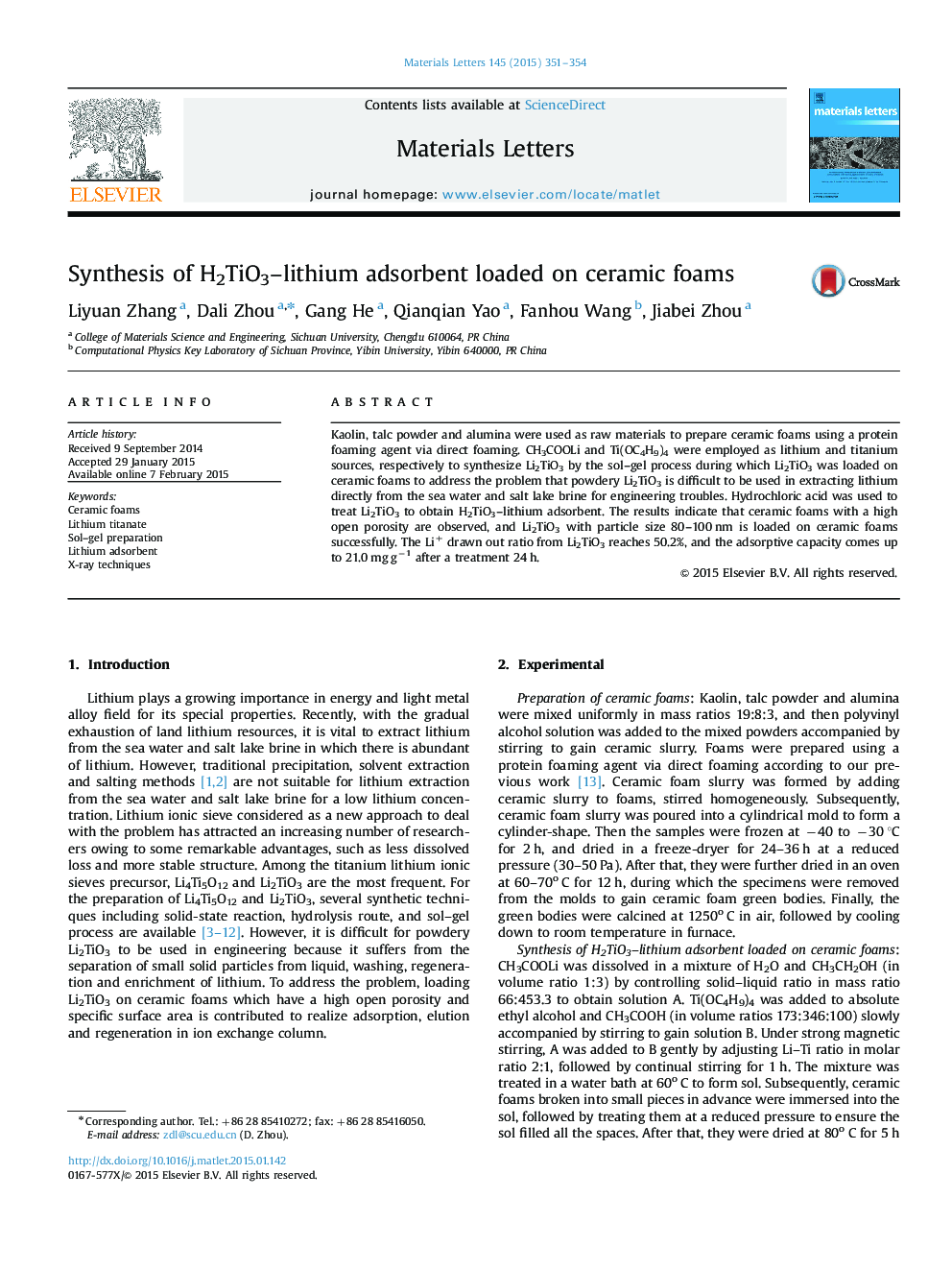| Article ID | Journal | Published Year | Pages | File Type |
|---|---|---|---|---|
| 1643043 | Materials Letters | 2015 | 4 Pages |
•Ceramic foams with a high open porosity are prepared with cheap raw materials.•Li2TiO3 is synthesized with CH3COOLi and Ti(OC4H9)4 by the sol–gel process.•Li2TiO3 is loaded on ceramic foams to solve the problems it suffers in engineering.•Rietveld refinement is done using the Reflex module in Materials Studio 5.5.•The Li+ drawn out ratio and the adsorptive capacity are 50.2% and 21.0 mg g−1.
Kaolin, talc powder and alumina were used as raw materials to prepare ceramic foams using a protein foaming agent via direct foaming. CH3COOLi and Ti(OC4H9)4 were employed as lithium and titanium sources, respectively to synthesize Li2TiO3 by the sol–gel process during which Li2TiO3 was loaded on ceramic foams to address the problem that powdery Li2TiO3 is difficult to be used in extracting lithium directly from the sea water and salt lake brine for engineering troubles. Hydrochloric acid was used to treat Li2TiO3 to obtain H2TiO3–lithium adsorbent. The results indicate that ceramic foams with a high open porosity are observed, and Li2TiO3 with particle size 80–100 nm is loaded on ceramic foams successfully. The Li+ drawn out ratio from Li2TiO3 reaches 50.2%, and the adsorptive capacity comes up to 21.0 mg g−1 after a treatment 24 h.
